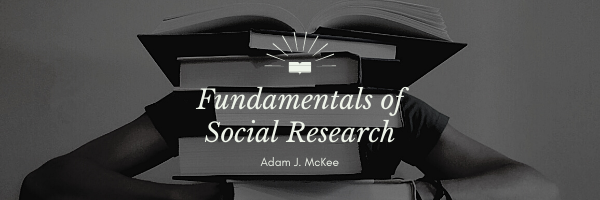A basic requirement of my Research Methods projects is that students must propose a True Experiment. Early on, students are often a bit confused about what that means. Hopefully, this article will clear things up until we get to that section and explore research designs in-depth.
One of the most important features of a true experiment is the use of a control group. A control group is a group of participants who are treated in the same way as the experimental group but do not receive the intervention being studied. The experimental group, on the other hand, receives the intervention being studied. The purpose of using a control group is to compare the results of the experimental group with the results of the control group. This helps to control for any other factors that might affect the dependent variable, such as environmental factors, personal factors, or previous exposure to the treatment.
Another key feature of a true experiment is the manipulation of an independent variable. An independent variable is a variable that is being manipulated by the researcher. For example, if we are interested in the effect of sleep on academic performance, we might manipulate the amount of sleep that participants get before a test. By manipulating the independent variable, we can observe the effect it has on the dependent variable, which is the variable being measured. In our example, the dependent variable would be academic performance.
Pro Tip: Avoid a hypothesis about something you can’t change! Age, race, ethnicity, religion and gender are examples of things you should avoid in crafting your hypothesis. You can’t change those things about people, just like you can’t change laws, policies, prison sentences, and other things beyond experimental control.
Randomization is another key feature of a true experiment. Randomization means that participants are assigned to the experimental or control group randomly, which helps to minimize the effects of selection bias. Selection bias occurs when participants are not randomly assigned to groups, which can lead to inaccurate conclusions. By randomly assigning participants to groups, we can be confident that any differences between the groups are due to chance.
Blinding is another important feature of a true experiment. Blinding means that participants do not know whether they are in the experimental or control group, which helps to eliminate the effects of bias. There are several types of blinding, including single-blinding, where participants do not know which group they are in, and double-blinding, where both participants and researchers do not know which group participants are in.
One final key feature of a true experiment is replication. Replication means that the experiment is repeated several times, often with different participants, to see if the results are consistent. This helps to increase the validity of the results and provides more confidence that the findings are reliable.
Pro Tip: Any time you are writing about your research design, use the idea of replication to see if you have described it well enough. If another researcher can follow your directions and do exactly what you did over and over again, then you are in good shape. In Science, specificity and details really matter!
A true experiment is a powerful research design that allows researchers to establish cause-and-effect relationships between variables. The key features of a true experiment include the use of a control group, manipulation of an independent variable, randomization, blinding, and replication. By carefully controlling these features, researchers can be confident in the validity of their results and draw accurate conclusions about the effects of interventions.
Experimental Hypotheses
An experimental hypothesis is a statement that makes a specific and testable prediction about the relationship between two variables in an experiment. In a true experiment, the independent variable is manipulated by the researcher to see how it affects the dependent variable. For example, the independent variable could be the amount of caffeine a person consumes, and the dependent variable could be their reaction time.
The experimental hypothesis predicts how the manipulation of the independent variable will affect the dependent variable. It is important to note that the hypothesis should be based on previous research and theory. This means that the researcher should have a good understanding of the existing literature on the topic before forming their hypothesis.
The experimental hypothesis is important because it helps to guide the research question and determine the study’s objectives. It also helps to focus the study by providing a clear direction for the researcher to follow. The hypothesis also helps to determine the type of statistical analysis that will be used to analyze the data.
When forming an experimental hypothesis, it is important to use clear and concise language that is easy to understand. The hypothesis should be specific enough to allow for clear predictions about the outcome of the experiment. This means that the variables being studied should be well-defined and measurable. It is also important to ensure that the hypothesis is testable using empirical methods.
Overall, the experimental hypothesis is a critical component of a true experiment. It provides a clear and testable prediction about the relationship between the independent and dependent variables. It helps to guide the research question, focus the study, and determine the statistical analysis that will be used to analyze the data. By forming a clear and testable hypothesis, researchers can ensure that their experiment is well-designed and meaningful.
Developed by Adam J. McKee.
Back to Research Tools Last Modified: 05/02/2023
